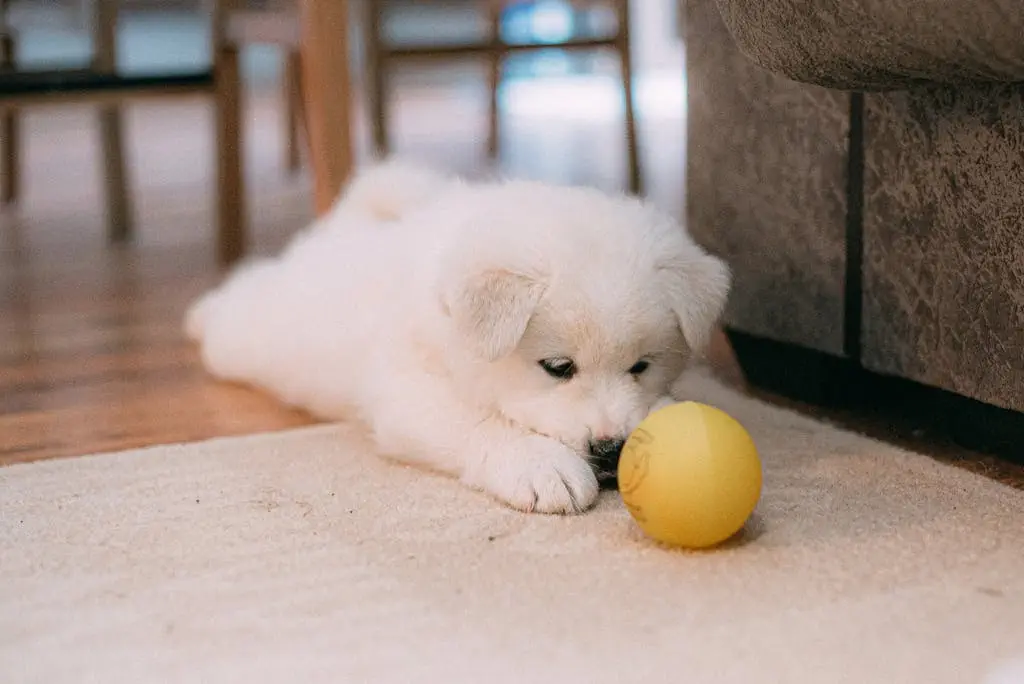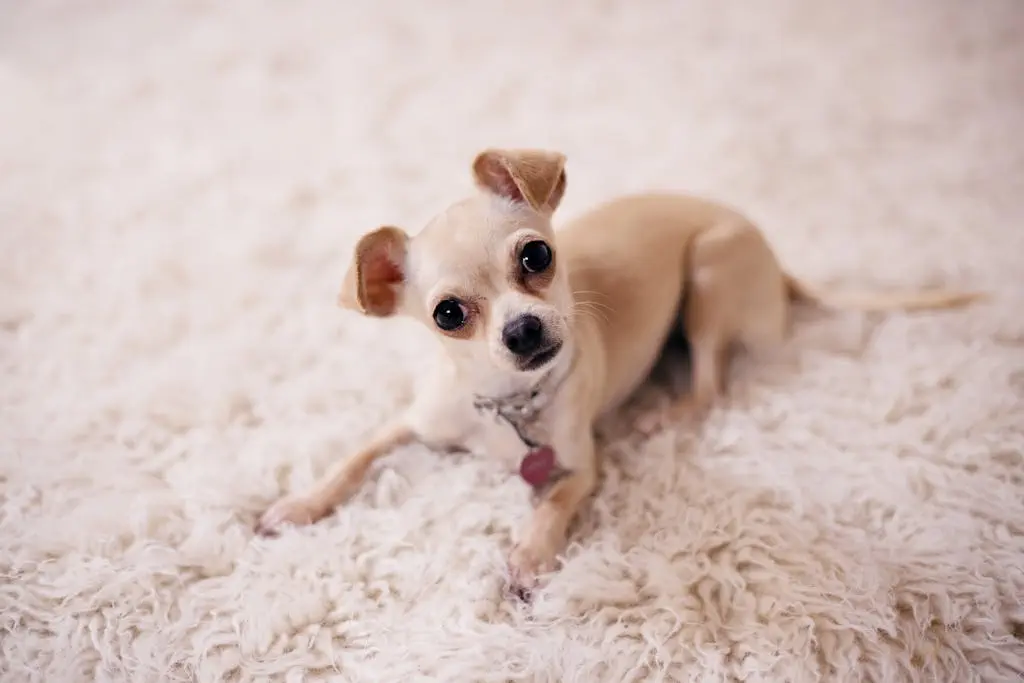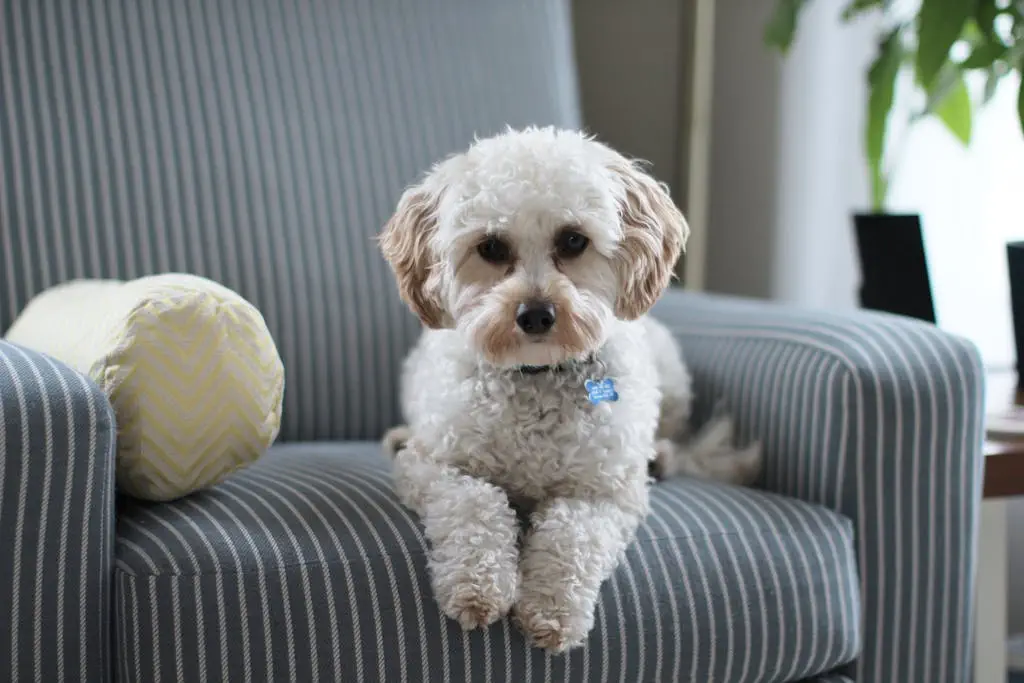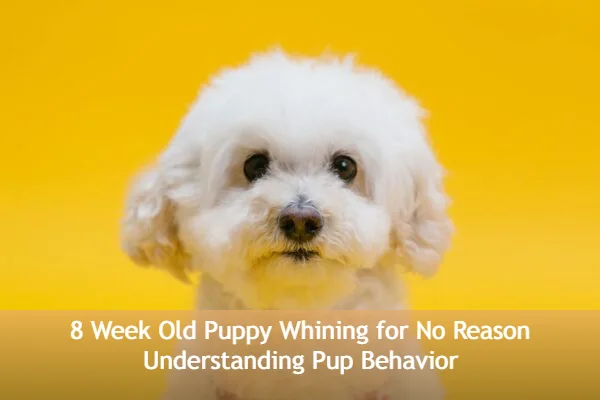Bringing home an 8 week old puppy whining for no reason can feel like a mystery wrapped in fluff! This curious behavior might leave you scratching your head, wondering what could possibly be bothering your new furry friend. Understanding why puppies whine is super important, as it helps you bond with your pet and ensures they feel secure in their new home. If left unchecked, constant whining can lead to stress for both you and your pup, so it’s essential to address it sooner rather than later.
In this article, we’ll get into the common reasons behind puppy whining, explore helpful soothing techniques, and discuss how meeting their basic needs can reduce their vocalizations. You’ll learn how to distinguish normal puppy behavior from signs of distress, ensuring that your adorable companion feels comfortable and happy. So, let’s unravel the mystery of your puppy’s cries and help them settle in!
Why Does a Puppy Whine? Common Reasons Behind It

Exploring Why Puppies Whine at Night
Puppies often cry or whine in the middle of the night because they are separated from their canine family and feel scared in a new home. The absence of warm bodies and maternal care can trigger instinctive crying as they seek reassurance. A puppy’s breed can also influence how much they whine, with some breeds being more vocal than others. Providing a cozy bed, access to a favorite enrichment toy like a kong, and keeping the door slightly open to hear the family can help soothe a scared or lonely puppy adjusting to nighttime. (PetMD, Dogs Trust)
Is Whining a Normal Behavior for a New Puppy?
Whining is a normal puppy behavior, especially in puppies between 3-16 weeks old who are still learning communication skills (Hills Pet). A 2-month-old puppy uses whining to express needs such as hunger, a desire for attention, or discomfort (Bayshore Vet). This type of whining helps pet parents understand when the puppy needs something, including potty breaks or reassurance. It takes time for puppies to adjust to their new home and develop other ways to communicate besides whining.
Distinguishing Between Normal Whining and Concern
While whining is generally normal, nonstop or excessive whining can signal a problem like health concerns or behavioral issues. Whining combined with symptoms in puppies such as panting, lethargy, or digestive discomfort should prompt a vet visit. Paying close attention to these earliest signs helps pet parents differentiate between normal behavior and when professional help is needed. Persistent whining may indicate that the puppy’s needs have not been fully met or that the puppy is experiencing discomfort or fear.
How to Soothe Your Whiny Puppy

Techniques to Comfort a Whining Pup
Creating a comforting environment is a vital step in soothing a puppy that cries or whines. Using a food-stuffed kong or puzzle toy can distract and reassure the puppy while providing mental exercise. Soft music or a white noise machine can block out weird noises that might otherwise scare your furry friend. Gentle petting and calm verbal reassurance help build trust and reduce stress, making it easier for your puppy to settle down. (Pride Bites)
Calming Methods for a Stressed Puppy
Establishing a consistent daily routine that includes feeding, potty trips, and daytime exercise helps reduce anxiety-induced whining. Gradual crate training gives puppies a safe space where they can feel secure even when separated from their human family. Anxiety wraps and pheromone diffusers are additional useful tools that pet parents can use to calm stressed puppies. Mental exercise through enrichment toys also prevents lack of stimulation, which can lead to unwanted behaviors like barking and whining.
When Soothe Tactics Aren’t Enough: Seeking Help
If your puppy’s whining persists despite your best efforts, it’s important to seek professional advice. A dog trainer can help address behavioral issues such as separation anxiety, while a veterinarian can rule out possible health concerns. Some puppies may need additional training or medical intervention to improve their comfort and reduce constant crying. Remember, it takes time and patience, but with guidance, many puppies successfully overcome excessive whining.
Understanding the Role of Bladder and Other Needs

Does Your Puppy Whine to Signal a Full Bladder?
Puppies often whine when they need to go outside for a bathroom break because they cannot hold their bladder for long periods, especially between 3-5 times daily for young puppies. A 4-month-old puppy may start holding it longer but still needs frequent potty trips to prevent discomfort. Recognizing that whining signals this need helps pet parents respond promptly and avoid accidents inside the house. Regular potty breaks are an essential step in effective potty training and reducing nighttime crying.
Managing a Pup’s Basic Needs to Reduce Whining
To minimize whining related to basic needs, maintain regular feeding schedules with access to fresh water but limit intake before bedtime. Providing plenty of daytime exercise helps keep an active puppy tired and less likely to whine from boredom or excess energy. Access to nursing or bottle feeding is crucial for newborn or bottle-fed puppies who may cry from hunger or nursing difficulties. Ensuring all these needs are met will help your puppy feel comfortable and less likely to signal discomfort through whining.
The Importance of Routine for Your Puppy
A consistent routine provides predictability that reassures puppies and helps them feel safe in their new home environment. Feeding, playtime, potty breaks, and rest should happen around the same times every day to establish good habits. Without routine, puppies may develop negative associations or separation anxiety, resulting in increased crying or barking. This steady pace helps your puppy learn what to expect and reduces stress caused by uncertainty.
Expert Recommendations to Address Constant Whining

Training Techniques to Help Your Pup Stop Whining
Positive reinforcement is an effective step in teaching puppies to reduce whining; rewarding quiet behavior encourages good habits. Commands like “quiet” or “settle” give your puppy clear communication skills and help them learn what behavior you expect. Ignoring attention-seeking whining teaches puppies that crying will not always get them what they want, which gradually reduces this behavior. Increasing alone time slowly helps prevent puppy separation anxiety and builds independence.
Creating a Comforting Environment for Your Puppy
Designating a quiet, cozy space near the human family where the puppy feels safe reduces fear and loneliness at night. Familiar scents on blankets or toys replicate maternal care and provide comfort to your furry friend. Using calming aids such as pheromone diffusers mimics natural reassurance and can block out scary stimuli like loud noises. A puppy safe area with access to food stuffed enrichment toys keeps your puppy engaged while resting comfortably.
Expert Quotes on Managing Puppy Whines
Experts from the American Kennel Club emphasize that whining is a natural way puppies communicate their needs but requires patience from pet parents. Consistent training combined with understanding and addressing the puppy’s physical and emotional needs goes a long way toward reducing excessive whining. Taking the time to recognize potential reasons behind whining helps owners respond effectively rather than creating negative associations.
Long-term Considerations and Future Trends in Puppy Comfort

How Puppy Whining Behavior Changes Over Time
As puppies grow past 4 months old, whining typically decreases because they better understand how to communicate and rely less on crying. Confidence builds with maturity and additional training, which makes puppies less prone to separation anxiety or fear-related vocalizations. Adult dog food introduction around this age supports healthy growth, which can also reduce discomfort-related whining. Patience during this transition period is essential as puppies develop more effective communication skills.
Future Trends in Puppy Care and Comfort Solutions
Technology such as smart collars and behavior-monitoring apps lets pet parents track their puppy’s needs and behavior patterns efficiently. Calming products like anxiety wraps and pheromone diffusers continue gaining popularity as non-invasive methods to soothe stressed puppies. Holistic approaches focusing on mental exercise and enrichment toys improve overall wellbeing beyond addressing just physical needs. These advancements help pet parents take proactive steps in supporting their puppy’s comfort.
Success Stories of Puppy Whining Solutions
Many pet parents report success in reducing whining by combining consistent routines, crate training, enrichment toys, and positive reinforcement techniques. Active puppies benefit greatly from regular daytime exercise paired with mental stimulation through puzzle toys or food stuffers like kong toys. Sharing these experiences through blog posts encourages others by showing how patience and understanding can create quiet puppies over time. Each small step made by owners contributes significantly to lasting behavioral improvements.
Conclusion
Whining is a common form of communication for an 8-week-old puppy indicating needs such as comfort, attention, bathroom breaks, or addressing health concerns. Understanding these signals allows pet parents to address their puppy’s needs effectively using soothing techniques, routines, enrichment toys, and proper training. If whining becomes excessive or persistent despite these measures, it’s important to seek veterinary or professional dog trainer advice. With time, patience, and care in canines’ mental and physical exercise, puppies mature into calm, well-adjusted adult dogs who communicate without constant crying.
FAQs
1. Why does my 8-week-old puppy whine at night?
Nighttime whining often stems from separation anxiety or fear of being alone in a new home environment without warm bodies nearby.
2. Is it normal for my puppy to whine for no apparent reason?
Yes; whining is part of normal puppy behavior as they adjust to their surroundings and learn how to communicate their needs.
3. How can I soothe my whiny puppy?
Provide a cozy space with familiar toys like food stuffers, maintain routine potty breaks, use calming aids such as white noise machines, and offer gentle reassurance.
4. When should I seek help for my puppy’s whining?
If whining is nonstop or accompanied by signs of illness like lethargy or digestive discomfort, consult your veterinarian or consider professional dog training for behavioral issues.
5. Does whining indicate a full bladder?
Often yes; puppies use whining to signal the need for a toilet trip because their bladder control is still developing at this age.

